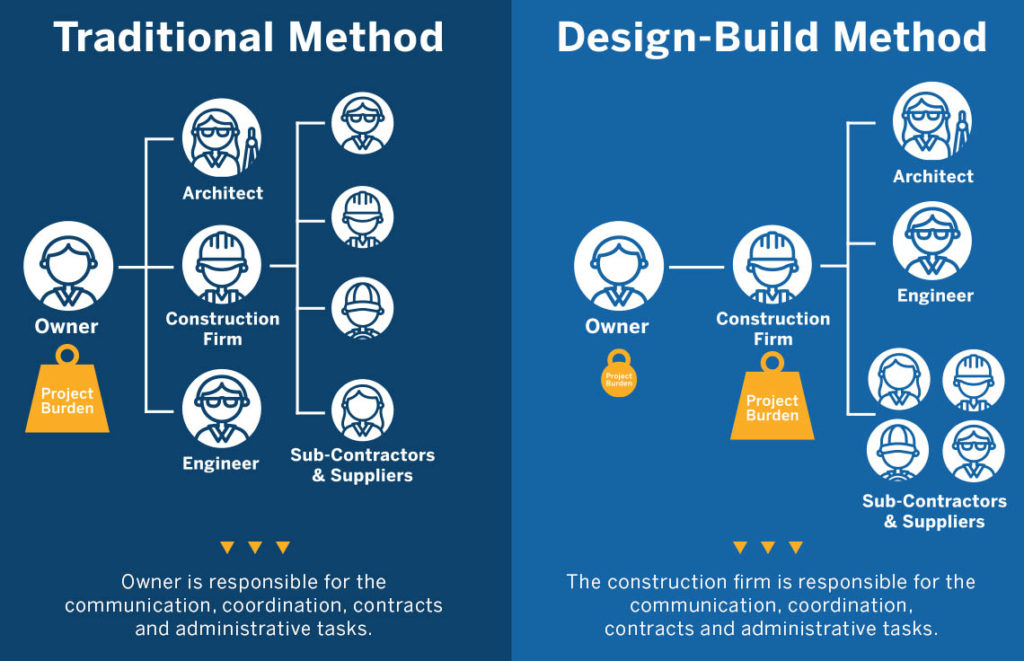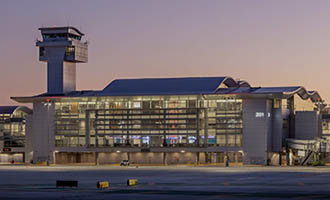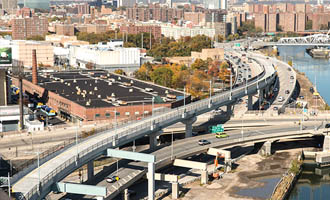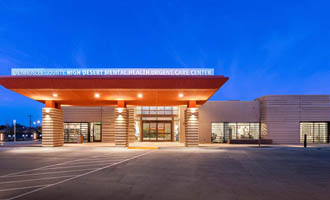Design-Build Construction Explained
Design-Build Construction Explained
What is Design-Build Construction?
While similar to the more traditional design-bid-build, design-build takes a newer approach to project delivery—one that emphasizes open communication between all stakeholders, including trades and subcontractors. Design-build construction offers many advantages to owners and contractors, including improved budget estimates, quicker project completion, and better teamwork between different entities.Unlike design-bid-build, which requires a contract for design and another for construction, design-build requires only one contract covering both the design and construction phases. The project usually progresses as an integrated process, overlapping the two phases. This speeds everything up, and a single leader—the design-builder—is responsible for meeting the contract requirements. The design-builder is also responsible for spotting inconsistencies between prescriptive requirements and performance standards and reporting those to the owner and other stakeholders.
A variant of design-build, progressive design-build (PDB) involves selecting the design-builder based on their qualifications rather than a project proposal. Many PDB owners select their design-builder before the design and project details are worked out (also called design-assist). In the PDB model, the owner works closely with the design-builder throughout all project phases, including design.

The Design-Build Process
Let’s take a closer look at the design-build process and how it differs from the more traditional design-bid-build project delivery method.
In the design-bid-build method, the project owner must oversee communications with the architect, engineer, construction firm, and sometimes others. This method simplifies communication by making the design-builder the single point of contact, removing much of the project burden from the owner’s shoulders.

1. Owner Selects Design-Builder and Team
First, the owner selects a design-builder and other needed team members. If the project is taking a progressive design-build or design-assist approach, the design-builder is chosen before any planning or design has happened. If not, the owner may choose a design-builder after working with an architect and engineer to create an initial design for the project.2. Planning and Design
Once the entire team is on board, plans are finalized based on the owner’s budget limitations, vision, and goals. Then together, the team creates a detailed design based on these criteria. Communication remains open between the design-builder and the owner throughout the process, keeping misunderstandings and rework to a minimum.3. Setting a Guaranteed Maximum Price (GMP)
Once project design details are in place, the design-builder seeks bids from subcontractors and trades to create a guaranteed maximum price (GMP). They then deliver it to the owner for consideration, and negotiations and design tweaks are made as needed to get the GMP and the project to the right place.
4. Construction
Construction can begin once the GMP is agreed upon and the design is finalized. Throughout the process, the owner remains in close contact with the design-builder, and the design-builder facilitates open communication with the architect, engineer, and subcontractors to maximize efficacy and minimize miscommunications. The early collaboration between stakeholders in the design-build method means that the construction process typically proceeds smoothly—and the agreed-upon GMP means there are no budget surprises for the owner.

Pros of Design-Build
The design-build project delivery method offers several important benefits. Let’s look at a few:Simplicity
In the design-build method, the entire process unites under a single agreement between owner and design-builder. Having only one contract instead of two simplifies the legal process—and also streamlines the entire project for the owner, who no longer carries the burden of managing the project. Instead, the design-builder takes on that responsibility, working closely with architects, engineers, and subcontractors to get the job done.Cost-efficiency
Design-build involves agreeing on a set budget before the project begins. This helps avoid unexpected cost increases and keeps everyone accountable. Seeing the total sum from the beginning may give some owners sticker shock, but research shows that savings in the long term are significant.
Better Communication
With the design-build model, the owner, engineer, and architect collaborate from the beginning of the project—sometimes even the design-builder is on board before the project begins and is also involved in that design process. With everyone working together to create the design and settle on a maximum budget, the better communication means the project often runs more smoothly during the construction phase as well.
Faster Completion
That open communication and additional pre-planning also manifests in faster project completion. Unlike design-bid-build, which requires time dedicated to the bidding process, design-build moves straight from the single-contract design phase to the construction phase. With everyone on a single team, the project can move forward quickly without many of the usual snags related to paperwork and contracts.
In particular, design-build can be a great fit for projects without complex designs, such as infrastructure or road projects, and any building projects that the owner and design-builder have previous experience with.
Cons of Design-Build
While the benefits of design-build are many, it’s not the best fit for every owner or construction project. Here are a few cons to consider:Challenges of Selecting a Design-Builder
Because the design-builder carries so much responsibility in this project delivery method, it’s essential to select a qualified firm or individual to do the job. The owner should follow a detailed selection process that considers the design-builder firm’s work style compatibility, track record and experience.Lack of Owner Control
In the design-build project delivery method, the owner must yield much of the control of design details to the design-builder and team, particularly after the design phase ends and the construction phase begins. Owners who prefer to be more hands-on throughout the construction process might not like this—while others will appreciate the relief of responsibility.New and Unfamiliar for Some
Design-build is one of the newest project delivery methods, which means it might be new and unfamiliar territory for some owners, architects, engineers and contractors. To offset any confusion, it’s best to establish clear expectations from the outset and make sure everyone understands how the process works.Design-Build Compared
Here’s how design-build compares to a few adjacent project delivery methods:
The Impact of Design-Build on the Construction Industry
Design-build is gaining ground quickly in the construction industry, moving from a new and unfamiliar method to an industry standard. Recent market research from the Design-Build Institute of America (DBIA) anticipated that design-build would represent up to 44 percent of construction spending in 2021, having experienced 18 percent in market growth since 2018. Sectors most likely to choose the design-build method include manufacturing, highway infrastructure, and education.
The design-build approach is helping to streamline construction projects, enable more collaboration between key stakeholders, and deliver projects more quickly. Owners are embracing this method because it offers a delivery schedule that’s often much shorter than the more traditional design-bid-build framework—and because it offers other benefits as well, such as up-front cost guarantees.

Examples of Design-Build Projects
Let’s look at a few examples of construction projects that utilized the design-build method, garnering accolades from the DBIA’s annual Design-Build Awards in 2021.
LAX Midfield Satellite Concourse
A seven-acre, 750,000 square foot terminal project that included construction of several buildings and two tunnels beneath active taxiways, this project became the largest design-build project ever tackled at LAX.
Hyatt Regency Portland at the Oregon Convention Center
A new, 440,000 square foot hotel constructed in 26 months, adding a much-needed hotel adjacent to the Oregon Convention Center.


University of Washington Hans Rosling Center for Population Health
The University of Washington constructed this 300,000 square foot facility in three years, coming in 2.5 percent under the grant budget for a savings of $4.5 million.
RFK Bridge Ramp to the Northbound Harlem River Drive
A 1,400 foot-long steel and concrete ramp that connects the RFK Bridge to the Northbound Harlem River Drive in East Harlem, New York, this project was originally slated to take 18 months but dropped to an ambitious goal of 15 months—and the team still came in 50 days ahead of schedule.


High Desert Mental Health Urgent Care Center
A new, 9,900 square foot mental health urgent care center located in Lancaster, California, the facility was constructed in only 6.5 months.
A Connected, Cloud-Based Construction Suite Drives Success
Whether or not design-build is the construction method of choice, as contractors move toward more digitized, mobile operations, the cloud is serving as the vehicle for modern construction management. With construction-specific, connected solutions operating in the cloud, contractors can streamline their operations and work data in real time instead of days, weeks or even months later. This helps boost project productivity, and save costs and increase profitability dramatically.
A future-ready solution, Trimble has applied its two decades of construction expertise in both project management operations to build its integrated ProjectSight project management solution. ProjectSight evolved from Trimble’s Prolog project management software, which was built on a cost and budget module with an emphasis on automating processes, eliminating manual paperwork and enabling one-touch data entry. ProjectSight also includes the Trimble Connect collaboration environment, which enables architects, engineers, contractors and owners to collaborate across their construction projects.
Now is the time to adopt a top-tier construction management system that’s designed for your projects—ProjectSight, available in Trimble Construction One. Connect with us for a free demo.